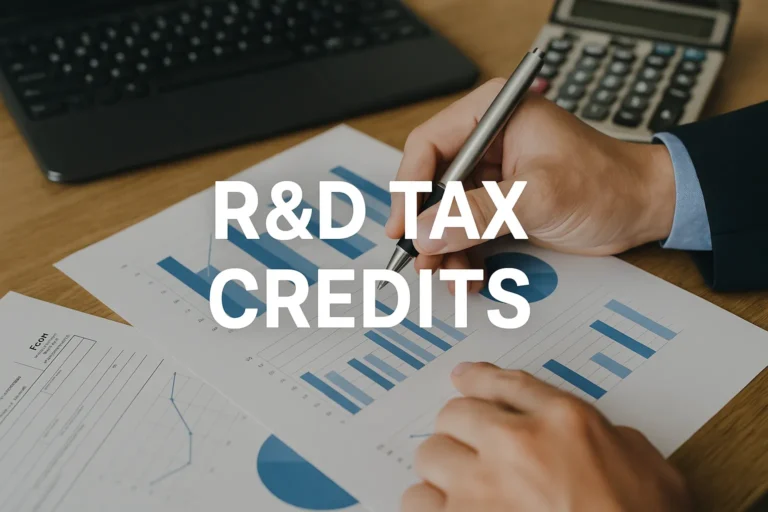How to Invest £100 UK: Start Building Wealth Today
Building Wealth with £100 in the UK
Investing might seem exclusive, but you can invest £100 UK monthly to build wealth with compounding. In fact, investing just £100 a month in the UK can set you on a path to significant wealth over time, thanks to the power of compounding and smart strategies. Whether you’re saving for a house, retirement, or financial freedom, small, consistent investments can make a big difference. For instance, £100 monthly at a 7% annual return could grow to over £52,000 in 20 years or £180,000 in 35 years!
This guide will walk you through how to start investing with £100 in the UK, covering beginner-friendly options, tax-efficient accounts, and practical steps to maximize your returns. We’ll use real-world examples, stats, and actionable tips to help you confidently take your first steps into investing. Ready to turn your £100 into a wealth-building tool? Let’s dive in!
Why Start Investing with £100?
Investing small amounts like £100 monthly can seem insignificant at first, but the key lies in consistency and time. Here’s why starting small works:
- Compound Interest: Your money grows exponentially over time as returns generate more returns. For example, £100 invested monthly at 5% annual growth could be worth £152,252 in 40 years, compared to £123,310 for someone investing £300 monthly for only 20 years.
- Pound Cost Averaging: Investing regularly smooths out market volatility by buying more shares when prices are low and fewer when prices are high, reducing risk.
- Accessibility: Modern platforms like eToro, IG, and XTB make investing affordable with low or no commissions and fractional shares.
- Discipline: Regular investing builds a habit, helping you stay committed to your financial goals.
Real-Life Example: Sarah, a 30-year-old teacher in London, started investing £100 monthly in a Stocks and Shares ISA in 2020. By 2025, her portfolio, tracking a global index fund, grew to £7,500, despite market dips, thanks to consistent contributions and a 6% average return.
Best Ways to Invest £100 in the UK
There are several ways to invest £100 monthly in the UK, each with its own benefits and risks. Below, we explore the top options, their pros and cons, and how they suit different goals.
1. Index Funds and ETFs: Simple and Low-Cost
What Are They?
Index funds and Exchange-Traded Funds (ETFs) track market indices like the FTSE 100 or S&P 500, offering exposure to hundreds or thousands of companies in one investment. They’re ideal for beginners due to their simplicity and low costs.
Why Choose Them?
- Diversification: A single ETF can include stocks from global markets, reducing risk. For example, a Vanguard FTSE All-World ETF covers over 4,000 companies.
- Low Fees: Passive funds often have fees as low as 0.1–0.3% annually, maximizing your £100’s growth.
- Accessibility: Platforms like eToro and XTB offer commission-free ETF trading.
Pros:
- Easy to understand and manage.
- Broad market exposure with one investment.
- Affordable for small budgets.
Cons:
- No control over individual holdings.
- Performance tied to market averages, not outperformance.
- Requires research to avoid high-fee ETFs.
How to Start:
Open an account with a platform like eToro or Hargreaves Lansdown, select a broad-market ETF (e.g., iShares MSCI World ETF), and set up a £100 monthly direct debit. Check the Ongoing Charges Figure (OCF) to ensure low fees.
Example: John, a 25-year-old graphic designer, invests £100 monthly in a FTSE 100 ETF. After 10 years at a 6% return, his investment grows to approximately £17,000, with minimal effort.
2. Robo-Advisors: Hands-Off Investing
What Are They?
Robo-advisors like Wealthify or Nutmeg create pre-made portfolios based on your risk tolerance and goals. They use algorithms to manage your investments, making them perfect for those who want a hands-off approach.
Why Choose Them?
- Ease of Use: Answer a few questions, and the platform builds your portfolio.
- Low Costs: Fees typically range from 0.5–1% annually, affordable for £100 monthly investments.
- Diversification: Portfolios often include stocks, bonds, and other assets.
Pros:
- Minimal effort required.
- User-friendly apps with intuitive interfaces.
- Suitable for beginners unsure about picking investments.
Cons:
- Limited control over specific investments.
- Fees slightly higher than self-managed ETFs.
- Less educational value for learning about markets.
How to Start:
Sign up with a robo-advisor like Moneyfarm, deposit £100 monthly, and choose a portfolio (e.g., low, medium, or high risk). Most platforms allow you to adjust risk levels later.
Example: Emma, a 35-year-old nurse, uses Wealthify to invest £100 monthly in a balanced portfolio. After 5 years, her investment grows to £7,200, with fees of only 0.6% annually.
3. Dividend-Paying Stocks: Build Passive Income
What Are They?
Dividend stocks are shares in companies that pay regular dividends, providing a passive income stream. Real Estate Investment Trusts (REITs) are a popular option for property exposure.
Why Choose Them?
- Income Potential: Dividends can be reinvested to compound returns or used as income.
- Stability: Dividend stocks like Unilever or BP provide a passive income stream, which forms a key part of shareholder benefits such as regular payouts and potential capital growth.
- Accessibility: Platforms like XTB allow fractional share purchases, ideal for £100 budgets.
Pros:
- Potential for steady income.
- Reinvesting dividends boosts long-term growth.
- Exposure to blue-chip companies.
Cons:
- Requires research to pick reliable dividend payers.
- Dividends aren’t guaranteed and can be cut.
- Slower capital growth compared to growth stocks.
How to Start:
Use a platform like IG with commission-free trading. Research stocks with consistent dividends (e.g., 3–5% yield) and diversify across 3–5 companies to reduce risk.
Example: Tom, a 40-year-old engineer, invests £100 monthly in a mix of dividend stocks like GlaxoSmithKline and a REIT. His portfolio generates £300 in annual dividends after 5 years, which he reinvests.
4. Multi-Asset Funds: Diversified Growth
What Are They?
Multi-asset funds combine stocks, bonds, and other assets in one portfolio, offering diversification with a single investment. They’re a middle ground between robo-advisors and self-managed portfolios.
Why Choose Them?
- Balanced Risk: Asset variety reduces volatility.
- Flexibility: Choose funds aligned with your risk tolerance (e.g., Vanguard LifeStrategy funds).
- Simplicity: One investment covers multiple asset classes.
Pros:
- More control than robo-advisors.
- Diversified across asset types.
- Easy to manage with £100 monthly.
Cons:
- Research needed to pick the right fund.
- Not all platforms offer multi-asset funds.
- Over-diversification can limit growth for small sums.
How to Start:
Select a multi-asset fund like Vanguard LifeStrategy 60% Equity on platforms like AJ Bell. Set up a £100 monthly investment and review annually.
Example: Lisa, a 28-year-old freelancer, invests £100 monthly in a multi-asset fund. After 7 years, her portfolio is worth £11,000, with balanced growth from stocks and bonds.
5. Tax-Efficient Accounts: Maximize Your Returns
What Are They?
Tax-efficient accounts like Stocks and Shares ISAs, Lifetime ISAs (LISAs), and Self-Invested Personal Pensions (SIPPs) offer tax benefits, boosting your £100’s growth.
- Stocks and Shares ISA: Tax-free growth and withdrawals; annual limit of £20,000.
- LISA: 25% government bonus (e.g., £100 becomes £125 instantly); for first home or retirement.
- SIPP: 20%+ tax relief; locked until age 57 (from 2028).
Why Choose Them?
- Government Bonuses: LISAs and SIPPs add 20–25% to your investment.
- Tax-Free Growth: ISAs protect gains from capital gains and dividend taxes.
- Wide Availability: Most platforms offer these accounts.
Pros:
- Immediate boost to your £100.
- No tax on gains or withdrawals (ISA).
- Long-term wealth-building potential.
Cons:
- LISAs and SIPPs have access restrictions.
- Complex rules require understanding.
- Some platforms limit investment options.
How to Start:
Open a Stocks and Shares ISA with Fidelity or a LISA with Moneybox. Invest £100 monthly in your chosen assets (e.g., ETFs or funds) within the account.
Example: Mark, a 32-year-old accountant, uses a LISA to invest £100 monthly. The 25% bonus adds £25 per month, and after 10 years, his £15,000 investment (including bonuses) grows to £22,000.
Step-by-Step Guide to Start Investing £100 in the UK
Ready to begin? Follow these steps to invest your £100 monthly effectively:
- Assess Your Finances:
- Build an emergency fund (3–6 months’ expenses).
- Pay off high-interest debt (e.g., credit cards) first for investing, a process closely tied to managing cash flow effectively.
- Ensure you can commit £100 monthly for at least 5 years.
- Choose Your Investment Approach:
- Decide between hands-off (robo-advisors, multi-asset funds) or hands-on (ETFs, stocks).
- Consider your risk tolerance and goals (e.g., retirement, home purchase).
- Select a Platform:
- Compare platforms like eToro (commission-free), IG (advanced tools), or Hargreaves Lansdown (wide fund selection).
- Check for low fees, fractional shares, and tax-efficient account options.
- Pick Your Investments:
- For simplicity, choose a global ETF or multi-asset fund.
- For income, select 3–5 dividend stocks or REITs.
- Use a robo-advisor for automated portfolios.
- Set Up a Monthly Plan:
- Automate £100 monthly contributions via direct debit.
- Some platforms offer commission discounts for regular investing.
- Monitor and Adjust:
- Review your portfolio annually or if your goals change.
- Rebalance if one asset grows disproportionately.
Tip: Use a Stocks and Shares ISA to protect your gains from tax, regardless of your investment choice.
Risks to Understand When Invest
Investing always involves risks. Here’s what to watch out for:
- Market Risk: Your £100 could lose value during market downturns.
- High Fees: Some platforms or funds charge high fees, eating into your returns.
- Access Restrictions: LISAs and SIPPs lock funds until specific conditions are met.
- Over-Risking: Small sums might tempt you to chase high returns, increasing losses.
- Platform Limitations: Some providers don’t support fractional shares or certain funds.
Mitigation Tips:
- Diversify across assets or regions.
- Choose low-cost platforms and funds (e.g., ETFs with <0.3% fees).
- Commit to a long-term horizon (5+ years).
- Research platforms for reliability and features.
Choosing the Right Platform for £100 Investments
Selecting the right platform is crucial for maximizing your £100. Here are top options:
- eToro:
- Features: Commission-free trading, fractional shares, copy trading.
- Best For: Beginners and dividend stock investors.
- Fees: 0% commission; spread fees apply.
- IG:
- Features: Up to 8.5% interest on uninvested cash, advanced tools.
- Best For: Active investors wanting ETFs and stocks.
- Fees: Commission-free for ETFs; low share dealing fees.
- XTB:
- Features: 4.5% on uninvested funds, fractional shares, 5,400+ assets.
- Best For: Small investors needing flexibility.
- Fees: Commission-free up to £100,000 monthly.
- Hargreaves Lansdown:
- Features: Wide range of funds, ISAs, and SIPPs.
- Best For: Fund investors and tax-efficient accounts.
- Fees: 0.45% platform fee; fund charges apply.
Pro Tip: Check for FSCS protection to ensure your money is safe if the platform fails.






